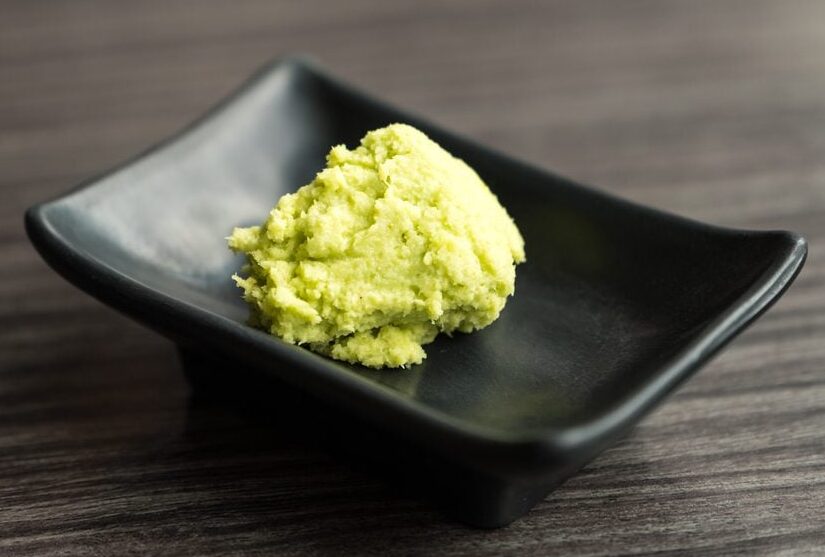Wasabi, with its vibrant green color and unmistakable pungency, is an integral part of Japanese cuisine. Known for its distinctive flavor and heat, wasabi adds a unique kick to dishes like sushi, sashimi, and various other Japanese delicacies. In this article, we will explore the origins of wasabi, its key characteristics, and how it is used in cooking, along with a simple recipe for making your own wasabi paste.
Origins and Key Characteristics of Wasabi: Wasabi, scientifically known as Wasabia japonica, is a plant native to Japan. It is a member of the Brassicaceae family, which includes cabbage, mustard, and horseradish. Wasabi grows naturally in cold, mountainous regions and is primarily cultivated for its underground stem, known as the rhizome. The rhizome is grated to produce the pungent, green paste that we commonly associate with wasabi.
The flavor of wasabi is often described as both spicy and refreshing. It has a distinct heat that is different from chili peppers, with a complex and subtle flavor profile. True wasabi is highly prized for its authenticity and is regarded as superior to synthetic or imitation wasabi, which is more readily available in many markets.
Using Wasabi in Cooking:
- Condiment for Sushi and Sashimi: Wasabi is most commonly served alongside sushi and sashimi. A small amount is added to soy sauce, creating a dipping sauce that enhances the flavors of the raw fish. It provides a delightful spicy kick and complements the delicate taste of seafood.
- Flavoring for Noodles and Broths: Wasabi can be added to noodle dishes, such as soba or udon, to add heat and depth of flavor. It can also be incorporated into broths or soup bases to give them an extra zing.
- Ingredient in Dressings and Sauces: Wasabi can be used in dressings and sauces to add a unique flavor. It can be blended with mayonnaise to create a spicy aioli or mixed with soy sauce and other ingredients for a tangy dipping sauce.
Making Wasabi Paste:
Ingredients:
- Fresh wasabi root or powdered wasabi
- Water
- Optional: Soy sauce or rice vinegar (to taste)
Instructions:
- If using fresh wasabi root, peel the outer skin with a vegetable peeler. Grate the root using a traditional Japanese grater (oroshigane) or a fine grater. The grating motion should be brisk and circular to release the flavors.
- If using powdered wasabi, follow the instructions on the packaging to create a paste by mixing the powder with water. The consistency should be similar to a smooth paste.
- Gradually add small amounts of water to the grated fresh wasabi or powdered wasabi while stirring continuously. Adjust the amount of water to achieve the desired consistency. The paste should be thick, yet spreadable.
- For added flavor, you can mix in a small amount of soy sauce or rice vinegar to taste. This will enhance the overall taste and aroma of the wasabi paste.
- Serve the freshly made wasabi paste alongside your favorite sushi, sashimi, or other dishes. Remember that a little goes a long way, so start with a small amount and add more according to your preference.
Conclusion: Wasabi is a quintessential element of Japanese cuisine, celebrated for its fiery flavor and vibrant green color. Whether accompanying sushi, enhancing noodles, or being used in dressings and sauces, wasabi adds a unique and exhilarating dimension to dishes. By understanding its origins, characteristics, and proper usage, you can appreciate the distinctiveness of this beloved spice. So, the next time you indulge in Japanese cuisine, let the heat of wasabi awaken your taste buds and elevate your culinary experience.





